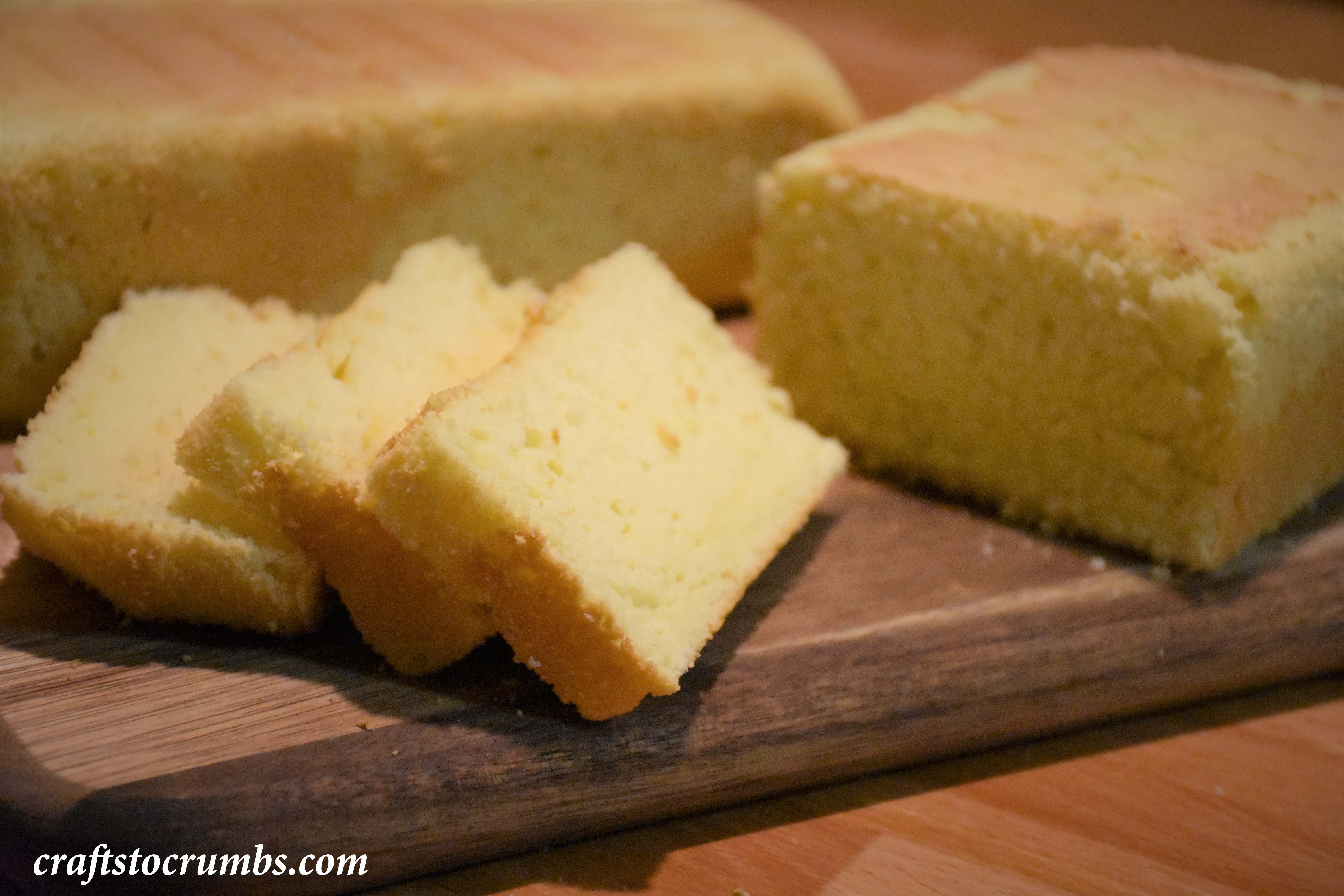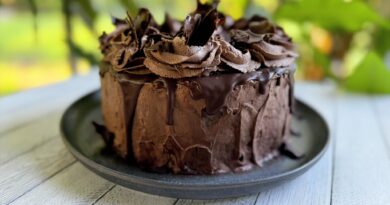Vanilla Sponge Cake
A super soft vanilla sponge cake made by using the “tang mian” or scalded flour / roux method. The flour is cooked in butter, which encapsulates the gluten in the fat and prevents it from activating and thus produces super soft sponge cake.
This cake reminds me of childhood like kanom kai (ຂະໜົມໃຂ່), which translates to egg cake or rather cake egg. We had these cakes when we were in the refugee camps in Thailand. And considering the proximity of Laos and Thailand to China, it’s no surprise that methods used up north had migrated down. I have been eyeing the method for a long time and finally got the push when my pregnant sister sent me a picture of a cake that had been shipped in from an Asian bakery in Atlanta.
I got extra motivation when I recently traveled with my other sister and picked up a few cakes from a Taiwanese bakery down in O-town. We grabbed a bag full of various cakes and at the bottom of the cake…almost forgotten was this rectangular cake. At first I thought it had a filling, but it turned out to be three very thin layer of the golden sponge cake staked on top of each other. The brown tops made it appear as though there was a filling in between each layer, but there wasn’t. I’m willing to bet they baked those on a baking sheet or jelly roll pan and just staked them. Which is smart because that would reduce the bake time considerably. Either way, one bite and I had a rush of childhood memories and I knew I had to move it up on my list of recipes to play with.
It took me a few times to get it to where I was happy with it and my pregnant sister approved, stating that it was so good and reminded her of kanom kai. I had to add slightly more flour, more sugar and more vanilla as I tweaked the recipe. Luckily, I’ve had that cake from the Taiwanese bakery not too long ago and knew these tweaks were needed. It’s a solid cake though it is soft. It’s fairly sweet, but still uses a lot less sugar than most western cakes. I only added two tablespoons more sugar than my initial recipe. But that little bit made a difference. And the vanilla was very prominent, so I added more of that too.
Notes & Tips:
- Similar to a chiffon, do not use non-stick pans as the cake will need to climb the walls of the pan to rise. And don’t grease the pan either! There are no added leavening agents to this recipe. I lined only the bottom with parchment paper to help with releasing it from the pan. But remember no two pans or ovens are alike.
- When testing the cake make sure you wait for at least 30 minutes of baking to test and don’t keep the oven door open too long. You want most of the baking to be done and don’t want the cake to deflate. I kept my oven door open a little too long to try to get footage and pictures and you may noticed they are slightly deflated in the video. But this didn’t impact overall texture and flavor.
- You can allow to cool upside down to reduce the shrinkage, but I didn’t find this impacted it too much and as previously stated the shrinkage didn’t impact texture of flavors.
- You can easily make a pandan version by substituting a 1/2 teaspoon of pandan paste for the vanilla extract. Keep in mind that that pandan paste is very potent as previously noted on my pandan cupcakes recipe.
- You can use other size pans, just adjust baking time accordingly. I did one run in a 9×13 for about 17-20 minutes and that worked well. I cut it up into thirds and stacked it like the bakery, but it didn’t seem to make as much. Perception I guess. And if you think that two loaves are too much, you haven’t had this cake yet. Once you start, you can’t stop. Thank goodness for less sugar. Oh and sharing is caring! 🙂
Vanilla Sponge Cake
Yields: 2 loaves (7.75 x 3.75 pans)
Cook Time: 37-42 mins
1 ¼ cup cake flour
1/8 tsp salt
½ cup (1 stick) unsalted butter
½ cup milk (room temperature)
6 large egg yolks
1 tablespoon vanilla extract
Meringue
6 large egg whites
2/3 cup granulated sugar
½ teaspoon cream of tartar
Preheat oven to 325F. Line the bottom of two 7.75 x 3.75 loaf pans with parchment paper. Do not use non-stick pans.
In a medium sauce pan, melt the stick of butter. Once the butter starts to bubble. Turn off the heat and sift flour and salt into butter. Allow to cook over residual heat for a minute or two, stirring frequently. Transfer this roux mixture into a large bowl. Whisk in milk, egg yolks and vanilla.
For the meringue, using an electric stand mixer or hand mixer, whisk the egg whites until frothy. Add cream of tartar and sugar and whisk until you get to stiff peak stage.
Fold, a third of the meringue into the batter with the whisk until well incorporated. Incorporate another third. Then using a rubber spatula, fold in the last third. Make sure to run the spatula to the bottom of the bowl and fold up to incorporate batter from the bottom of the bowl. Try not to overwork the batter.
Split the batter between the two pans. Bake for 37-42 minutes. The cake will spring back when touched and tester should come out clean. If you are testing, make sure to be quick and not keep oven door open for too long the cake may deflate.
Allow cake to cool in pan for 15-20 minutes. You may have work the edges with your finger, to pull them away from pan so they don’t pull too much due to shrinkage. Run a sharp knife around the edges. Gently turn onto cooling rack and allow to cool completely before serving.
Discover more from Crafts to Crumbs
Subscribe to get the latest posts sent to your email.




thanks for the recipe! I’ve been looking all over for a tang mian type cake. this one turned out perfect.
You’re welcome. I’m so glad it turned out for you!